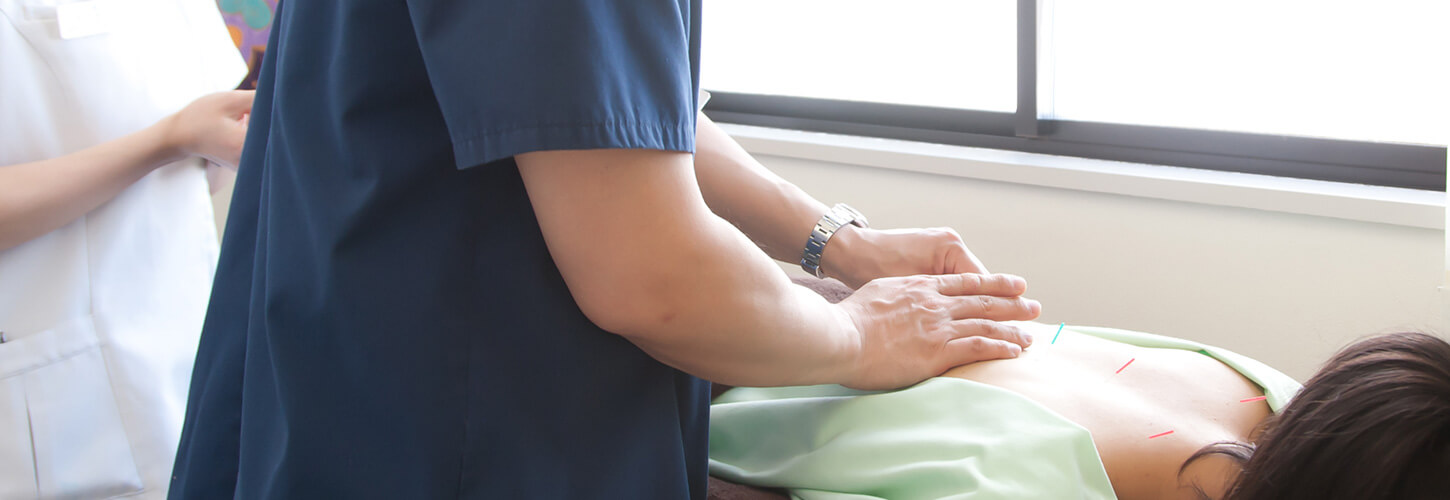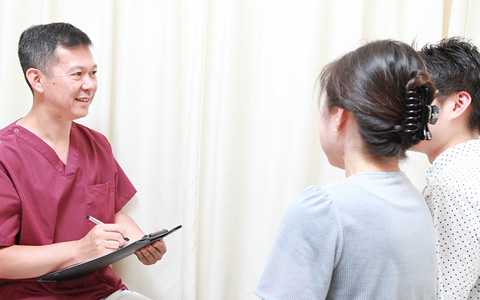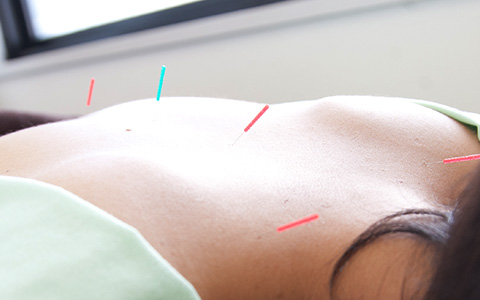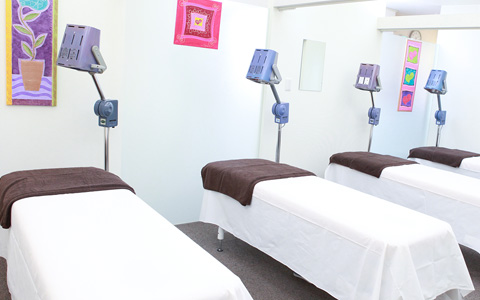Acupuncture Provides Long-Term Relief of Low Back Pain
[Source: Acupuncture Today, by Michael Devitt, March., 2002]
Back pain is one of the most common reasons people see a health care provider. It has been estimated that up to 80% of the world’s population will suffer from back pain at some point in their lives, with the lower back as the most common location of pain. Although most episodes of low back pain last less than two weeks, research has shown that recurrence rates for low back pain can reach as high as 50% in the first few months following an initial episode.1,2
While there is no definitive way to resolve lower back pain, the use of acupuncture to treat this condition has increased dramatically in the past few decades, based in a large extent to placebo-controlled studies that have validated it as a reliable method of pain relief. The results of a recent study published in the Clinical Journal of Pain provide further proof that acupuncture is a safe and effective procedure for low-back pain, and that it can maintain positive outcomes for periods of six months or longer without producing the negative side-effects that often accompany more traditional pain remedies.
Drs. Christer Carlsson and Bengt Sjund of the Lund University Hospital in Sweden recruited 50 patients (33 women, 17 main) from a tertiary level pain clinic for their study. The median age of the participants was 49.8; each patient had been suffering chronic low back pain for a minimum of six months and had tried a variety of other therapies (such as corsets, nerve blocks, drugs and physiotherapy) to treat their condition, but to no avail.
Subjects were randomly assigned to a manual acupuncture group, an electroacupuncture group or a placebo group. Treatment sessions lasted a total of 20 minutes each and were delivered once per week for eight weeks, with the same amount of time and care given to all patients in each group. A followup treatment was given after two months, and a tenth and final treatment was given after an additional two months.
In the manual group, local points on the lower back and distal points on the lower limbs, forearms and hands were used. The number of needles used per patient increased from an average of eight during the first session to as many as 18 during the third or fourth session. Needles were stimulated three times during each session to attain de qi.
A slightly different protocol was used on patients receiving electroacupuncture. Patients in this group received manual stimulation only during the first few sessions, followed by electrical stimulation of four needles in the low back in subsequent sessions. A similar number of needles as used in the manual acupuncture group were inserted and activated by hand.
The placebo group was given mock stimulation using what the researchers termed an “impressive” — but disconnected – stimulator attached to two large electrodes. The electrodes were placed on the skin over the most painful areas in the lower back. During mock stimulation, flashing lamps from the machine were displayed and made visible to the patient to give the illusion that treatment was being delivered.
Throughout the study, patients recorded pain levels and other measurements in small booklets called pain diaries. Among the variables measured were pain intensity (recorded twice daily on a visual analog scale from 0 to 100, 100 being severe as possible); intake of analgesics (recorded daily); sleep quality (scored on a scale of “good,” “slightly disturbed by pain” or “badly disturbed by pain”); and activity level. These diaries were compiled and their results analyzed by a nurse practitioner at the end of the study.
In addition, assessments were performed by an independent observer who did not know which type of acupuncture each patient received. These assessments were taken at four intervals: baseline, one month, three months and six months after the treatment period. These assessments consisted of a clinical interview and physical examination, after which the observer classified the patient’s pain as improved, unchanged, or worse.
“Significant” Changes Observed in Acupuncture Patients
Analysis of the pain diaries revealed “significant” differences between acupuncture and placebo patients at the one-, three- and six-month intervals following treatment, all of which favored acupuncture as a more effective form of pain relief.
For example, in the acupuncture group, both morning and evening pain scores were lower than baseline measurements and continued to decrease for the duration of treatment. In the placebo group, however, pain scores were several points higher after one month than they were at baseline, and continued to remain higher than the baseline scores throughout the study.
Activity levels were also markedly improved in the acupuncture group. Fourteen acupuncture patients and seven placebo patients had been on sick leave (either part-time or full-time) prior to the start of the study. By the time the tenth acupuncture treatment was delivered, six of the acupuncture patients on sick leave had returned to part-time or full-time work; another six were retired but still reported improved activity levels. In comparison, only one patient in the placebo group showed an improvement in activity; another patient actually regressed to being put on full sick leave.
Furthermore, acupuncture patients experienced less episodes of sleep disturbance than their placebo-treated counterparts. Before the study, 30 acupuncture patients and 12 placebo patients reported sleep disturbances due to pain. The researchers reported that the sleep pattern was “significantly less disturbed after the treatment period” in the acupuncture group, but that there was “no significant difference in sleep disturbance” in the placebo patients.
Finally, total intake of analgesics dropped dramatically in the acupuncture group, but not the placebo group. At the start of the study, patients in the acupuncture group consumed an average of 31 pills per week; those in the placebo group consumed an average of 23 pills. At the six-month follow-up, the number of pills taken by placebo patients remained almost identical (21.5 per person per week), but had dropped more than 28% to 21.4 pills per week in acupuncture patients.
Independent examination by the blinded observer appeared to corroborate the patients’ pain estimates. One month after the initial treatment period, 16 acupuncture patients (but only two placebo patients) were judged to be improved. After six months, 14 acupuncture patients (and only two placebo patients) were still improved. Both types of acupuncture worked effectively; of the 14 patients who showed improvement after six months, eight received manual acupuncture and six received electrical stimulation.
One interesting result of the study was that acupuncture appeared to be most effective in women. Of the 16 acupuncture patients judged to be “improved” at the one-month follow-up, 15 were women. At the six-month follow-up, all 14 patients who were still improved were women. The researchers were at a loss to explain this phenomenon, but hypothesized that it may be linked to estrogen receptors in the central nervous system.
Treatment Works Best with Specific Types of Pain
In their discussion, Carlsson and Sjund stated that the trial “demonstrated a long-term pain-relieving effect of needle acupuncture compared with true placebo in some patients with chronic low back pain.” To substantiate this claim, they highlighted several components that had been built into the study to help validate its results. Among them:
- Only acupuncture na・e patients (those who had never received acupuncture before) were selected for inclusion;
- Patients were informed at the start of the study that the treatment might not be felt;
- An equal amount of time and care was spent on each patient from every treatment group;
- The placebo treatment used in the trial (mock stimulation) was preferred because, unlike sham acupuncture, needles were not inserted, which might have inadvertently skewed the results from the placebo group; and
- The independent observer who performed assessments was never made aware of which group each subject was in and specifically avoided asking any questions about the type of treatment subjects received.
Taken together, the researchers concluded that these factors “seem sufficient to establish a true placebo treatment in the current study.” They added that based on their latest study, in conjunction with the results of acupuncture trials on other disorders, “there is now reasonable evidence that acupuncture has a clinically relevant pain-relieving effect on certain forms of chronic pain.”
Carlsson and Sjund also advised practitioners that just because acupuncture works on certain types of back pain, it may not produce the same results on every type. “It would be as correct to assess the effect of acupuncture on all types of pain,” they observed, “as it would be to study the effect of common penicillin on all types of bacterial infections and calculate some form of ‘average.'”
As to the specific type of pain, the researchers believe that based on previously published papers, acupuncture may be most effective for low back pain that is nociceptive (caused by an injury or disease outside the nervous system) in origin. Determining the cause of pain, they feel, is paramount to using a particular therapy for relief. As the scientists stated in their conclusion:
“Acupuncture does not seem to be a suitable treatment modality for neuropathic pain. However, the clinical use of acupuncture is sometimes indicated for the treatment of chronic nociceptive pain. Our study is the first to show that acupuncture may have a long-term effect on chronic low back pain superior to that of placebo ・Therefore, it is vital that before acupuncture is applied, a thorough analysis of the pain condition is performed to preclude the indiscriminate, unnecessary, and costly use of this treatment technique.”
References
- Moffett JK, Torgerson D, Bell-Syer S, et al. Randomised controlled trial of exercise for low back pain: clinical outcomes, cost and preferences. British Medical Journal July 31, 1999;319(7205):279-283.
- Nyiendo J, Haas M, Goodwin P. Patient characteristics, practice activities, and one-month outcomes for chronic, recurrent low-back pain treated by chiropractors and family medical physicians: a practice-based feasibility study. Journal of Manipulative and Physiological Therapeutics May 2000; 23(4):239-45.
- Carlsson C, Sjund B. Acupuncture for chronic low back pain: a randomized placebo-controlled study with long-term follow-up. Clinical Journal of Pain 2001;17(4):296-305.

Fertility Treatment
Other Areas of Expertise
Acura Acupuncture Clinic Tokyo
(Shibuya St., Omotesando St., Aoyama)
Please contact us to make an appointment.
Office Hours (Closed on Tuesday)
10:00 – 21:00 (Mon / Wed)
9:30 – 21:00 (Thu)
9:30 – 19:00 (Fri)
9:30 – 18:00 (Sat, Sun, National Holidays)



